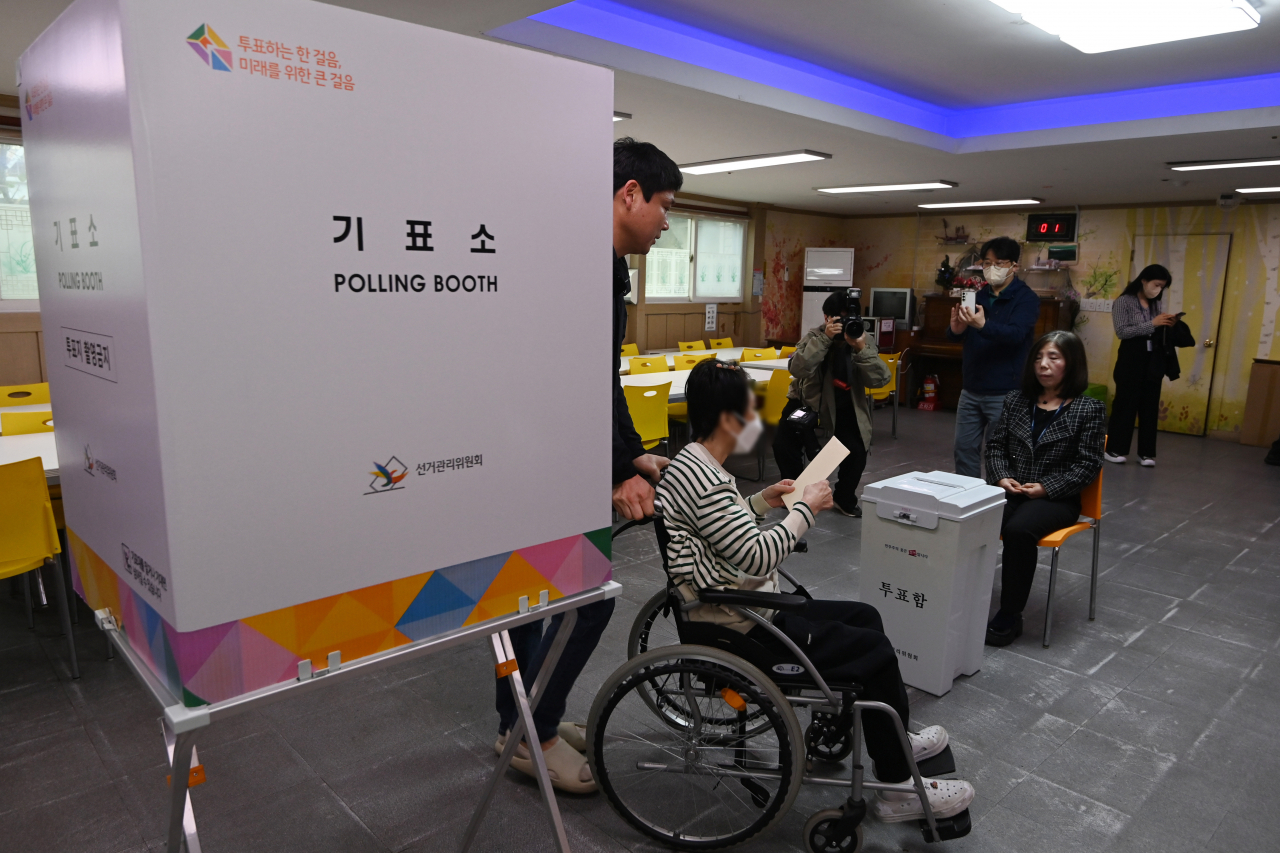5.1 % of Korean population registered as disabled in 2023: report
Majority of the disabled population aged 65 and up
By Lee Jung-jooPublished : April 18, 2024 - 14:47

More than 2.64 million South Koreans, comprising 5.1 percent of the country's total population, were registered as disabled persons in 2023, according to annual statistics released by the Ministry of Health and Welfare on Thursday.
Most of the disabled population were also aged 65 and above, making up more than half of the total, the ministry said in the report. The proportion of those with disabilities aged 65 and above has increased annually, with 41.4 percent in 2014, 49.9 percent in 2020 and 53.9 percent in 2023.
The total population of disabled persons decreased by 6,528 people as of the end of 2023, according to the ministry. But the total percentage of the population registered with disabilities is the same as numbers from 2022 due to a decline in the entire population.
As of the end of 2023, there were 86,287 newly registered individuals compared to the previous year. Additionally, 92,815 individuals were not included in the total count as they were no longer registered, primarily due to reasons such as death.
According to the Health Ministry, there were more males registered with disabilities compared to females, with around 1.53 million males accounting for 57.9 percent of the total population with disabilities. Meanwhile, more than 1.11 million or 42.1 percent of the disabled person’s population were females.
Among the 15 different types of disabilities, the largest share of the population was those with physical impairments at 43.7 percent, followed by 16.4 percent with hearing impairments, 9.4 percent with visual impairments, 9.1 percent with brain lesion disorder and 8.7 percent with intellectual disabilities.
The number of those with physical impairments and brain lesion disorders decreased compared to records taken in 2022, while the number of those with disorders like hearing impairments, developmental disabilities like intellectual disabilities and autism and kidney disorders increased.
Out of the 86,287 newly registered population with disabilities, most were registered to have hearing impairments, followed by physical impairments, brain lesion disorders and kidney disorders.
“The increase in the number of those with disabilities is due to a combination of results, including total population decline and aging (of the Korean population),” said Hwang Seung-hyeon, director of the Ministry of Health and Welfare’s Division of Policy for Persons with Disabilities.
“The ministry will work to establish policies necessary for the disabled by reflecting new policy demands and the change in the trend of those with disabilities.”






![[Herald Interview] Mom’s Touch seeks to replicate success in Japan](http://res.heraldm.com/phpwas/restmb_idxmake.php?idx=644&simg=/content/image/2024/04/29/20240429050568_0.jpg&u=)



![[News Focus] Lee tells Yoon that he has governed without political dialogue](http://res.heraldm.com/phpwas/restmb_idxmake.php?idx=644&simg=/content/image/2024/04/29/20240429050696_0.jpg&u=20240429210658)








![[Today’s K-pop] Seventeen sets sales record with best-of album](http://res.heraldm.com/phpwas/restmb_idxmake.php?idx=642&simg=/content/image/2024/04/30/20240430050818_0.jpg&u=)